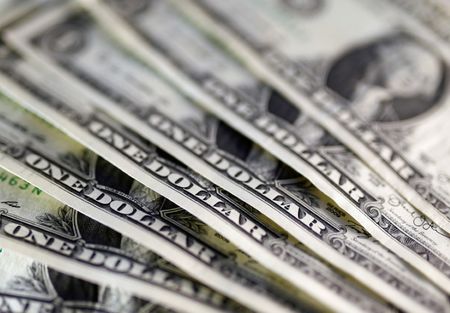US dollar rally unlikely to be sustained going forward – UBS
2024.06.27 10:11

Investing.com – The U.S. dollar has been in demand of late, climbing close to its highest level of the year. However, this rally is unlikely to be sustained in the coming months, according to UBS.
At 08:05 ET (12:05 GMT), the Dollar Index, which tracks the greenback against a basket of six other currencies, traded at 105.597, up around 1% in June, and only marginally below the 2024 high of 106.52 set in April.
This strength reflects a combination of factors, including the fact that the Federal Reserve has been keeping rates high for longer while other major central banks—including the , , and —have already started cutting, analysts at UBS said, in a note dated June 27.
Since investors often view the U.S. currency as a safe haven, it has also likely been benefiting from political uncertainty surrounding the French legislative elections—with the first round of voting taking place this Sunday.
Notably, the U.S. dollar has gained around 14% against the yen since the start of the year, breaking above the 160 level this week to push the Japanese currency to its weakest level since 1986.
The euro, which is the largest constituent in the DXY index, has also fallen more than 3% against the dollar in 2024.
Further upward pressure on the U.S. dollar remains possible in the near term.
If former U.S. President Donald Trump is perceived as more likely to win the election after the first televised debate with President Joe Biden later today, this could lift the U.S. currency—given the potential for looser fiscal policy if the Republican Party wins both the White House and control of Congress.
The outcome of the French election on Sunday could also weaken the euro in the event of a strong result for either right- or left-leaning parties.
However, recent U.S. dollar strength should fade in the coming months, the bank added, as a slowdown in U.S. growth allows the to start cutting rates in September.
The greenback, which we view as richly valued, should also face downward pressure as markets start to price a deeper Fed rate-cutting cycle.
Finally, fears about the size of the U.S. fiscal deficit may prove to be another headwind over the longer term, UBS added.








